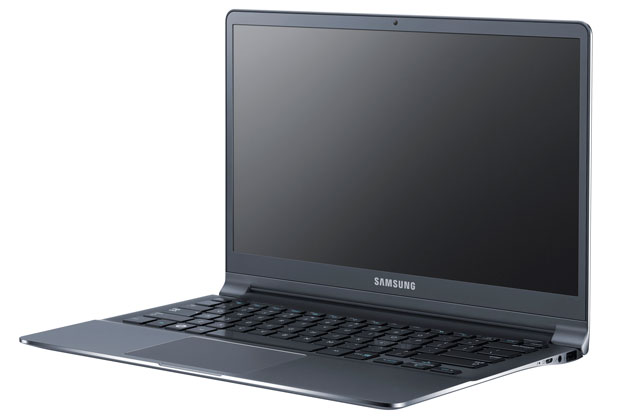
The 2012 update to Samsung’s flagship Ultrabook series, the 900X, is an ultraportable computer of absolute beauty. The ultrathin machine — the Korean firm claims it’s the world’s thinnest in its category — exudes the sort of style normally reserved for products from its chief rival, Apple.
The new model – we reviewed the clumsily named NP900X3C-A01ZA variant (price: R15 999) — weighs just 1,16kg, yet packs in a fair amount of computing grunt inside its waif-like, 12,9mm frame. Featuring a latest-generation Core i5 processor, clocked at 1,7GHz, 4GB of 1,6GHz DDR3 RAM and a fast 256GB SanDisk solid-state drive, the new Series 9 doesn’t sacrifice too much in the performance department.
You won’t be using this machine to do complex video editing, but as an everyday workhorse for e-mail, Web browsing and document editing it’s plenty fast. Boot time is lightning quick — less than nine seconds — and the machine exits sleep mode in less than two seconds.
On the Series 9, Samsung has got so many hardware touches just right. For example, the well-designed keyboard’s keys are perfectly spaced and provide reassuring feedback. The Shift, Enter and Backspace keys are also slightly larger than on most laptops, but the increased size works well. The backlit keyboard is simply a pleasure to type on.
The large trackpad is also well executed, and Apple users should find no trouble adjusting quickly to Samsung’s approach to multi-touch gestures. Gestures with up to four fingers are supported, along with must-have features like two-finger scrolling. The trackpad perhaps has a slightly “cheap” feel to its feedback when pressing down on it — the MacBook Air, for example, has a more assured feel about its trackpad when clicking on it — but this is a minor gripe and by no means a deal breaker.
In terms of ports, the left side of the machine has a USB 3.0 connector, a mini-HDMI port and a network port (you’ll need to buy an Ethernet cable adapter separately if you want to connect to a wired network). On the right is a USB 2.0 port, a 3,5mm headphone jack and a display output (again adapters are necessary to connect legacy VGA projectors). Lastly, there’s a four-in-one multi-card slot under the machine, which accepts SD, SDHC, SDXC and MMC cards.
The built-in speakers are respectable for a machine of this size, though it’s to be expected that you won’t get great bass or high volume out of a machine this thin. Sure, the sound is a little tinny, but not excessively so. Samsung has done a great job of giving the 900X entirely respectable sound.

Then there’s the screen, which is another standout feature of the new 9 Series. The 13,3-inch LED display is gorgeous to look it. The 1 600×900-pixel resolution no doubt helps but Samsung’s “SuperBright” technology really does wonders. Text is astonishingly crisp — among the best we’ve seen on a laptop. We suspect it will only be bested by the new Retina MacBook Pro displays.
Of course, the biggest concern on machines this size is always battery life. Even here, Samsung has done a good job, probably aided by the Ivy Bridge-powered Intel processor. The 900X3C’s four-cell battery delivered between four and a half and five hours of standard use before we had to plug in the charger.
On the software front, the machine comes standard with Windows 7 Home Premium. There’s refreshingly little nagware and it was pretty simply to uninstall what was there, including Norton antivirus.
All in all, the new 900X is one of the very best Ultrabooks on the market. We quite like the machines that Asus and Lenovo have been building, too, but the computer Samsung has to beat with the 900X is the MacBook Air. Has it done it? Ladies and gentlemen, I think this round may be a dead heat. The choice may really come down to whether you want a machine running Windows or Mac OS X. — (c) 2012 NewsCentral Media




